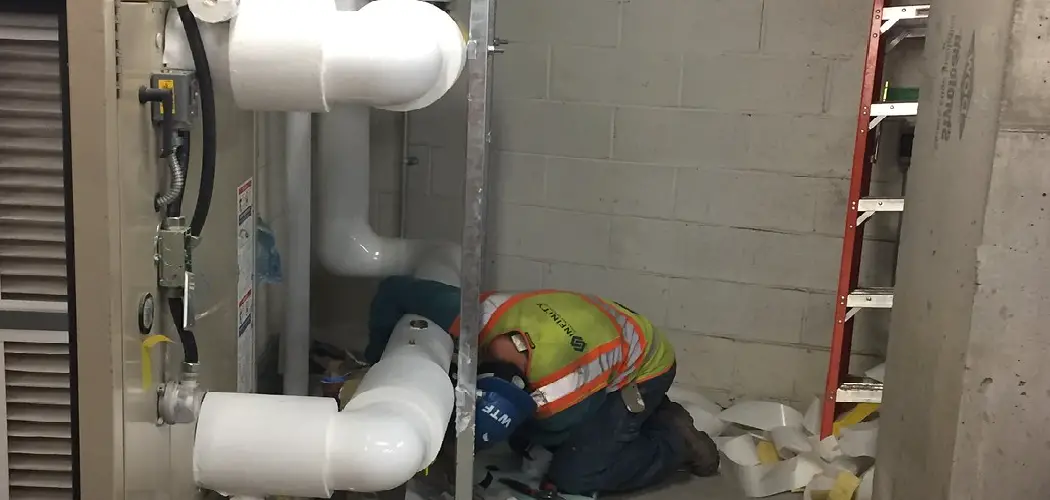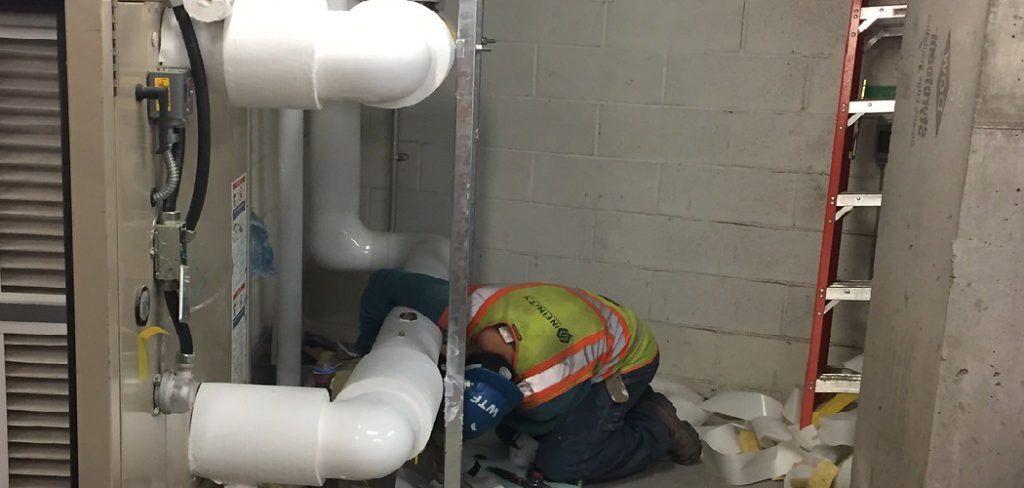
If you’ve noticed your faucets sputtering or the water pressure in your home has dropped significantly, it’s likely that there is air trapped in your water lines. Air can enter your pipes for a number of reasons, such as a water main break or repairs to your plumbing system.
While it may seem like a minor issue, the air in your water lines can cause serious problems if left unchecked, such as corrosion and reduced water flow. Fortunately, there are a few simple steps you can take to purge air from your water lines and restore your plumbing system to optimal working conditions.
In this article, we’ll discuss the most effective methods on how to purge air from water lines, including using the main shut-off valve, bleeding your faucets, and installing an air relief valve. With these tips, you’ll be able to quickly and easily eliminate air from your water lines, ensuring that your plumbing system operates smoothly and efficiently.
Why Am I Getting Air in My Water Lines?
Air can get into your water lines for a number of reasons. This includes air entering through the supply line from the municipal water system or from within your own plumbing system due to faulty fixtures, valves, pumps, and other components. Air can also enter as a result of water hammer shock (pressure surges), which is caused by sudden changes in water flow.
If air is building up in your pipes, you can likely hear it when the taps are turned on. This is often accompanied by a loud gurgling sound and, in some cases, spitting or spraying from the faucet. Air pockets can also cause low water pressure as well as disruption to hot water circulation, resulting in tepid water coming out of the tap.
If left untreated, air can reduce the overall flow capacity of your plumbing system and cause damage to pipes. It is important to take steps to get rid of air from your water lines as soon as possible in order to prevent these issues. To do this, you will need to use a process called “purging.”
10 Methods on How to Purge Air from Water Lines
1. Bleed Your Faucets:
One of the simplest and most effective ways to purge air from your water lines is to bleed your faucets. To do this, turn on each faucet in your home, starting from the lowest point and working your way up. Let the water run for several minutes until you no longer hear any sputtering or see any bubbles in the water.
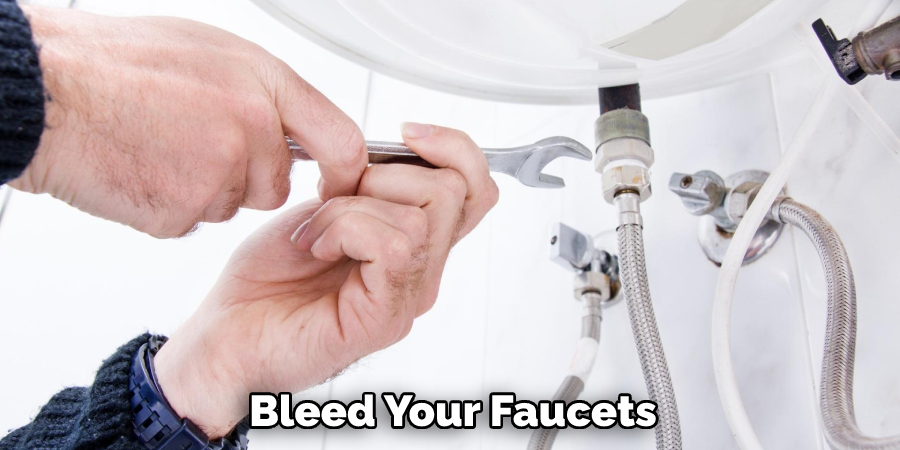
This will help to release any trapped air in your pipes. However, it is important to remember that this process should be done slowly, as too much water rushing through the pipes at once can cause damage. While this method may not be the most efficient, it is certainly the easiest.
2. Use the Main Shut-Off Valve:
Another way to purge air from your water lines is to use the main shut-off valve. This valve is typically located near your water meter or where the main water line enters your home. Turn off the main shut-off valve, then open all the faucets in your home. This will help to release any trapped air in your pipes.
Once the water runs clear and you no longer hear any sputtering or see any bubbles in the water, you can turn the main shut-off valve back on. Try rotating each faucet slowly on and off to get any stubborn air bubbles out. This process can take a few minutes, but it is worth taking the time to ensure all air has been expelled from your water lines.
3. Install an Air Relief Valve:
An air relief valve is a small valve that is installed on top of your plumbing system. It allows air to escape from your pipes, helping to prevent air from becoming trapped in your water lines. If you have a good system, an air relief valve can be installed on the pressure tank. If you have a municipal water system, an air relief valve can be installed on the main water line.
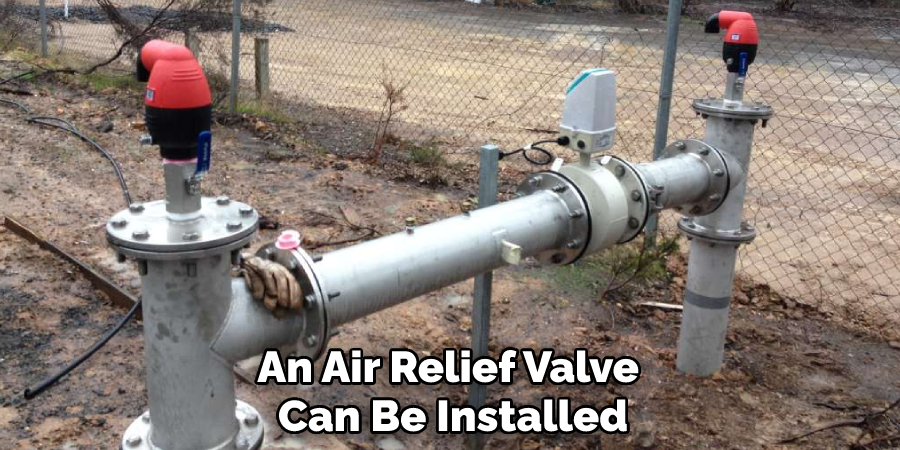
The air relief valve should be installed downstream of the shutoff valve and upstream from any pressure regulators. Be sure to check local codes to make sure you meet all requirements for installation. When an air relief valve is installed, it should be checked periodically to make sure it is working properly. Any buildup of air in the system should be purged when necessary.
4. Use a Hose Bib:
Another effective way to purge air from your water lines is to use a hose bib. This is a small faucet that is typically located outside your home. Connect a hose to the hose bib and turn it on. This will allow water to flow through your pipes and release any trapped air.
When the water runs clear, and there is no more air coming through, you can shut the hose bib off. Be sure to turn the main water supply back on before you disconnect the hose. This is an easy and quick way to purge air from your water lines. If you have a somewhat complicated plumbing system, however, it may not be the best option.
5. Use a Water Pump:
If your home has a water pump, you can use it to purge air from your water lines. Turn off the main shut-off valve, then turn on the water pump. Open all the faucets in your home and let the water run for several minutes until you no longer hear any sputtering or see any bubbles in the water.
Once the water runs clear, you can turn off the water pump and turn the main shut-off valve back on. Make sure all of your faucets are open so that air can escape from the system as it refills with water. This process should take 5-10 minutes. Finally, check each of your faucets to make sure the water runs clear and free from air bubbles.
6. Use a Pressure Tank:
A pressure tank is a tank that is installed on your plumbing system. It helps to regulate water pressure and can also help to purge air from your water lines. Turn off the main shut-off valve, then drain the pressure tank.
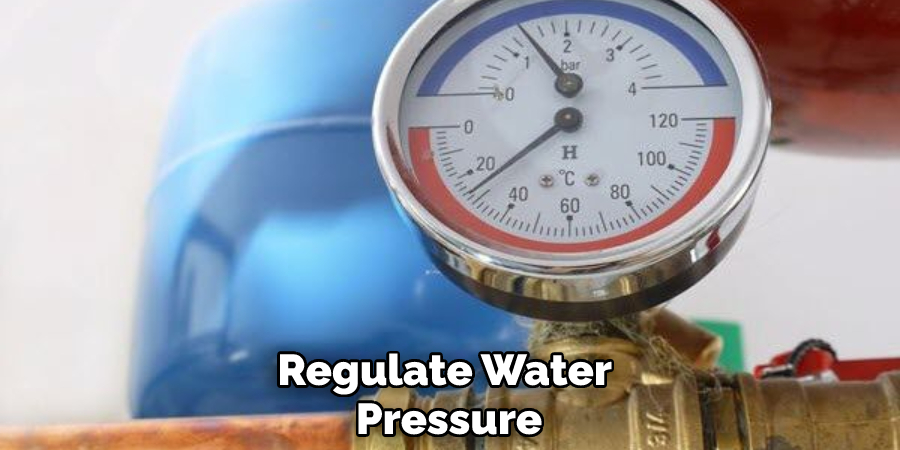
Open all the faucets in your home and let the water run for several minutes until you no longer hear any sputtering or see any bubbles in the water. Once the water runs clear, you can turn the main shut-off valve back on and refill the pressure tank.
7. Use a Drain Valve:
A drain valve is a small valve that is installed on your plumbing system. It allows you to drain water from your pipes, which can help to purge air from your water lines. Turn off the main shut-off valve, then open the drain valve. Let the water run for several minutes until you no longer hear any sputtering or see any bubbles in the water. Once the water runs clear, you can close the drain valve and turn the main shut-off valve back on.
8. Use a Hose Connector:
A hose connector is a small device that connects a hose to your plumbing system. It can be used to purge air from your water lines by connecting the hose to a faucet and turning it on. Make sure the faucet you connect the hose to is the highest point in your plumbing system. Let the water run for several minutes until you no longer hear any sputtering or see any bubbles in the water.
9. Use a Power Flusher:
If you have a serious problem with air in your water lines, you may need to use a power flusher. This is a device that is attached to your plumbing system and uses high-pressure water to flush out any trapped air. A power flusher can be rented from most hardware stores or plumbing supply companies. Follow the manufacturer’s instructions to use the power flusher safely and effectively.
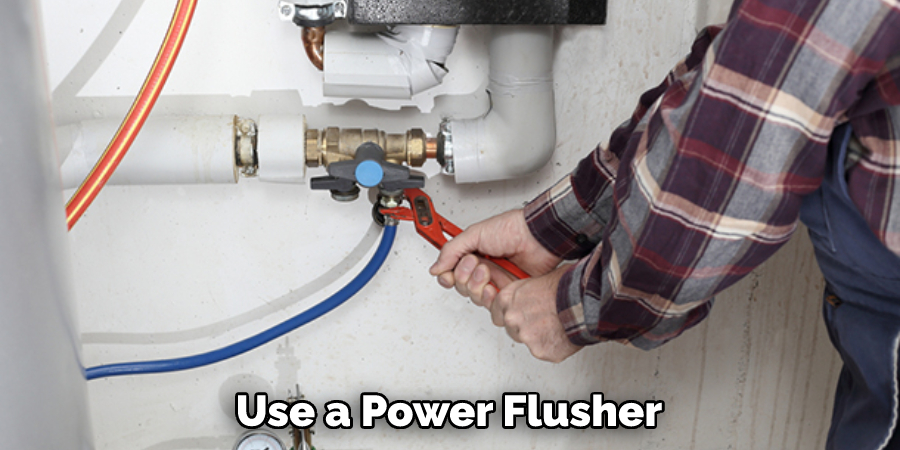
10. Call a Professional:
If you’re unsure about how to purge air from your water lines or you’re experiencing serious issues with your plumbing system, it’s best to call a professional plumber. A licensed plumber will have the knowledge, tools, and experience necessary to diagnose and repair any problems with your plumbing system. They can also offer advice on how to prevent air from becoming trapped in your water lines in the future.
Conclusion
In conclusion, purging air from water lines is an important plumbing maintenance task that every homeowner should be aware of. If you do experience strange noises or fluctuations in your water pressure, it’s time to clear the air from your pipes. While professional plumbers can help, many experienced homeowners will be able to achieve the same results on their own time.
All it takes is a few simple tools and a basic understanding of the process for successfully expelling all pockets of trapped air. Get started with our handy guide today and see how easy pipe purging can be! Should you have any doubts or further questions regarding how to purge air from water lines, don’t hesitate to reach out to a local professional. Remember, it’s always best to stay current on maintenance and keep your home functioning at its best.

